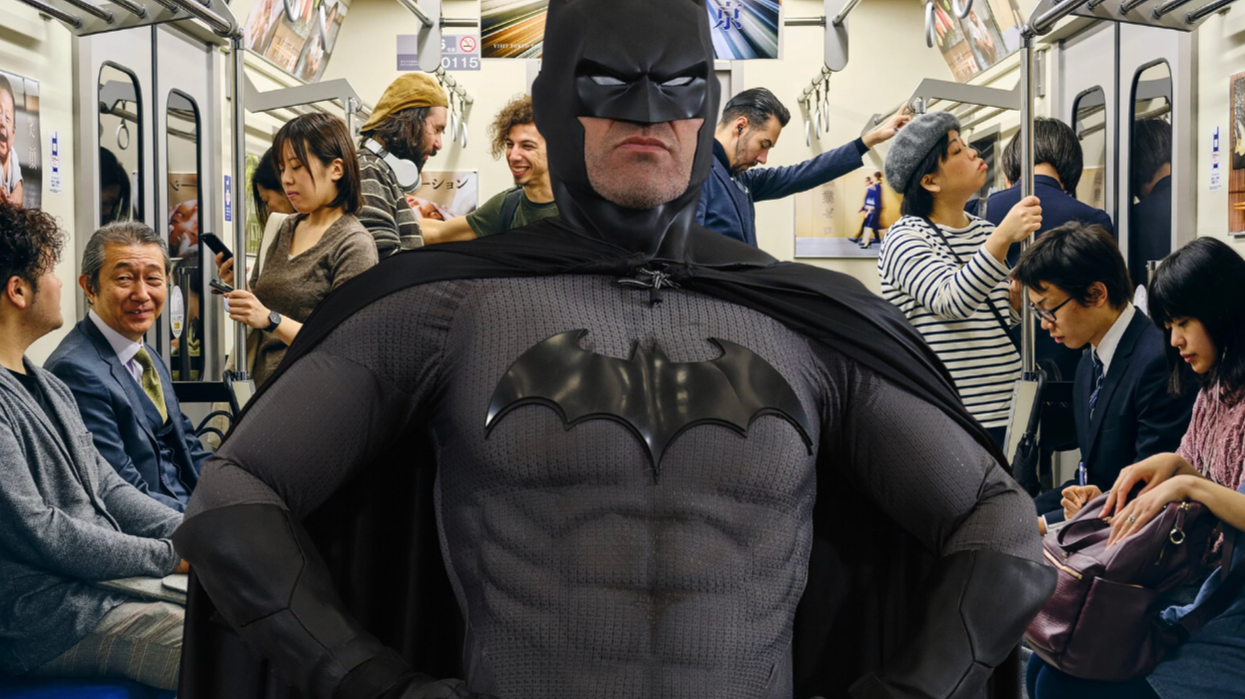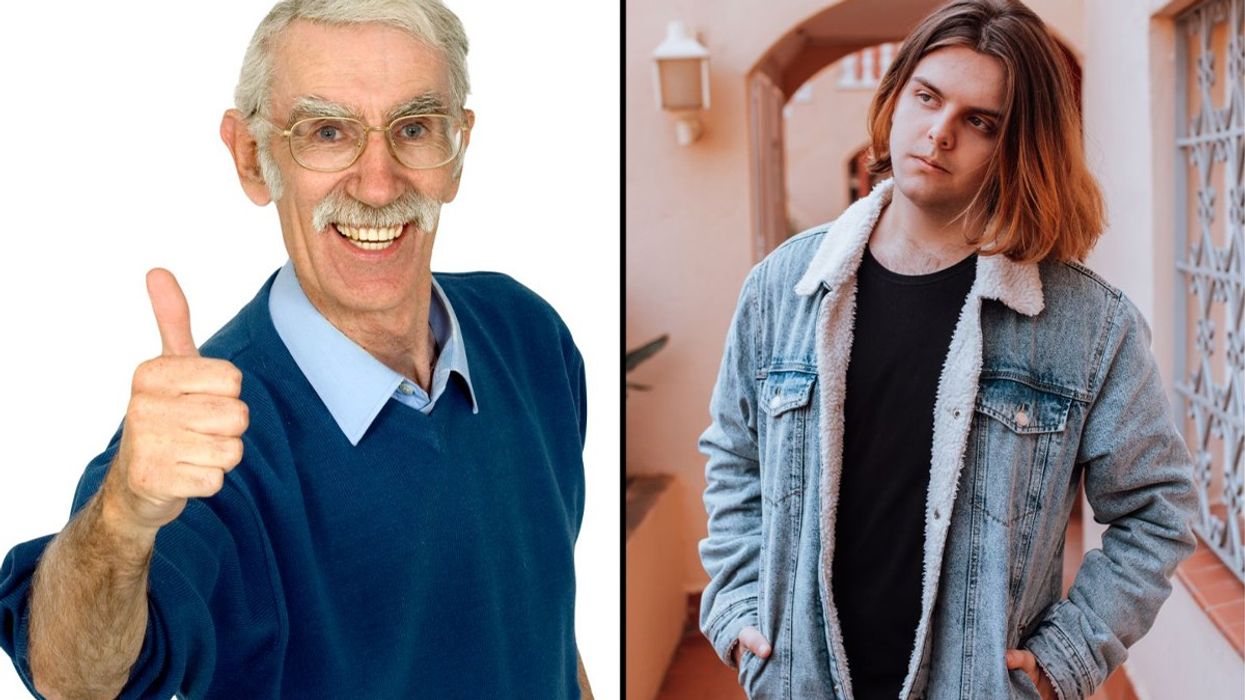We think words mean power, and so should you. Through Project Literacy, GOOD and Pearson are building partnerships for a more literate future. Follow the #ProjectLiteracy hashtag and visit good.is or projectliteracy.com to tell us your stories, help us ask the right questions, and take action in your community.
To a hearing person, it might seem reading and writing would be favored methods of communication for those born deaf. However, mastering literacy may be a life-long struggle for deaf children who often learn English as a second language and may entirely lack early access to all formal language at home due to lack of sign language proficiency among parents.
Around 90 percent of deaf children are born to hearing parents who must learn some system of signing in order to fully communicate with their deaf child. However, American Sign Language, the predominant language used by deaf communities in the United States, does not translate directly into English. American Sign Language is made up of thousands of individual signs and many parents aren’t able to achieve sufficient ASL mastery, according to Marlon Kuntze, a literacy expert and a Gallaudet University professor. Gallaudet University is the only university in the world geared toward deaf students and educates students in a bilingual English and ASL environment.
Through an ASL interpreter, Kuntze said that lack of access to rich early communication in any language, can delay educational progress of deaf children for years. Kuntze was born deaf to deaf parents and said the most important factor of childhood literacy among both hearing and deaf children is access to language. He said he had no trouble learning to read or write due to early exposure to high-level communication. “A lot of people can’t imagine how a child would learn to read if they’ve never heard a word before,” Kuntze said, “and that’s where people get tripped up.”
Kuntze explained that language—any language—primes the brain for understanding written communication. His parents taught him to read using ASL, and he taught his hearing children to read in the same manner, signing the story as he went along with the book.
“I’ve often said to parents: just throw a book in the crib and let your children play with it,” he said, also encouraging parents to read with their children. “A book is not just about words. It can have a lot of pictures, something that they can follow. You can tell a story just through pictures and you sprinkle a word here and there then they see one word and another word and before long they are reading and understanding.”
For parents who have difficulty with American Sign Language, Sarina Roffe, executive director of the National Cued Speech Association (and mother to a deaf son) suggests learning to cue. Cued speech was invented in the 1960s by former Gallaudet University Vice President R. Orin Cornett. It is essentially sonic language in coded form, using several different hand positions to indicate different phonetic sounds.
Roffe said she preferred using cued speech with her son because she was able to communicate fluently. She said hearing parents who learn ASL may not be great models of the language because they may struggle with grammar and learning the numerous signs. Through cuing, she said her son was able to excel at reading and writing.
Still cued speech is not so much a language as it is a language-learning tool. “It’s designed to convey language. Once I acquired language, its usefulness kind of decreased,” Sarina’s son, Simon Roffe, wrote in an email. American Sign Language, on the other hand, is a complete language, independent of English. It has its own grammar, punctuation, and sentence structure, and it also allows for a type of embodied communication not possible in English.
“In the deaf world, we have ABC stories and hand shape stories,” Amber Gallego, an American Sign Language interpreter, said, explaining that ABC stories follow the chronology of the alphabet to tell a complete story, as letters morph into actions and characters, while hand shape stories present a riff on a particular sign to communicate a full tale. “There’s an amazing one about the Holocaust--she uses the hand shapes A to Z to tell you about the Holocaust and it’s this incredible piece of artwork that if you don’t understand it, won’t impact you the same,” Gallego said.
In a viral YouTube video, Gallego bops her partly pink hair at a Kendrick Lamar concert. Translating for Lamar, she waves her arms emphatically, asking her deaf audience: “is this the loudest sound right now?!” And while it may seem paradoxical to hearing people, on stage Gallego truly is the loudest sound.
Sign language allows Gallego to make music with her body, conveying emotion silently. She said the language allows for certain forms of storytelling that are made possible by its physicality. When she interprets music, she doesn’t just translate, she moves to the beat and expresses sounds visually. In one video on her YouTube channel, she performs Johnny Cash’s “Ring Of Fire” and becomes the entire mariachi band, miming a trumpet and guitar. In another video, she interprets TLC’s “What About Your Friends,” dancing with the music and seeming to switch personas as if she is every member of group. Gallego said that’s part of her method. “What’s interesting is a lot of interpreters have decided to only solely focus on English when they are actually interpreting, but there are so many different layers of communication,” she said, “what I focus on is more than that.”
Gallego, who is the parent of an adopted deaf son, learned sign language from friends in the deaf community at an early age. Many people like her have picked up on the beauty and usefulness of ASL, making it the third most popular language studied in American colleges and Universities according the Modern Languages Association’s most recent report.
With the Internet’s latest rise in visual forms of communication---from emojis to GIFs, it’s no wonder sign language has gained traction. We live in a visual culture and sign language is a visual language. Sia’s fans embraced ASL when the pop star used it in her video for “Soon We’ll Be Found,” and Deaf West’s recent production of the musical “Spring Awakening,” featured a mixed deaf and hearing cast and was a hit on Broadway. In addition, there are countless online videos created by hearing teens who share their love of sign language with fans.
While this curiosity and cultural exchange may be well intentioned, some in the deaf community worry that the booming popularity of sign language among hearing people may amount to a type of cultural supplantation. The increased interest and usage of ASL by hearing people is occurring as “cures” for deafness abound and funding for deaf schools declines.
“No one seems able to scientifically explain why ASL is detrimental to deaf children, but great for the brain development of hearing babies born to yuppies,” writes deaf author Sara Nović in a recent Guernica article. Nović writes that programs for the deaf are being defunded while ASL is being taught to hearing adults and children and she worries the language will die out without native signers.
For Gallego the answer is to increase funding for the education of deaf students while continuing to teach ASL to hearing individuals. As she points out, if everyone knew some sign language, as people have in some communities throughout history, life might be easier for deaf people like her son. “If you could imagine every day of your life having to fight for the basic human rights of communication, how tired would you get?” she said.
















 Otis knew before they did.
Otis knew before they did.